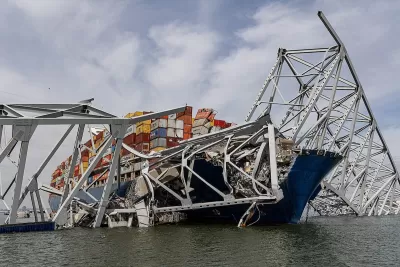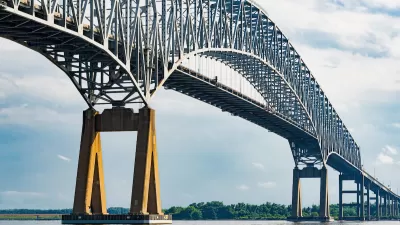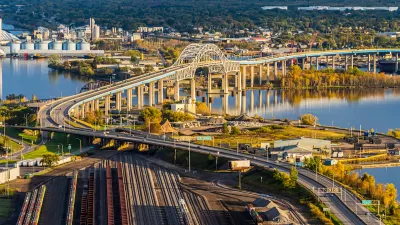The loss of a key route to the Port of Baltimore is causing major delays and long detours on alternate routes.

Baltimore-area residents are still feeling the impacts of the March collapse of the Francis Scott Key Bridge, which, when open, carried more than 34,000 vehicles including over 3,000 commercial trucks per day.
In a piece for The Baltimore Banner, April Quevedo writes, “Trucks carrying hazardous materials that used the bridge to cross the harbor are now forced to go around the Beltway in the opposite direction (a 35-mile detour) due to cargo restrictions through Baltimore City traffic tunnels — though not all hazmat vehicle operators adhere to commodity restrictions.”
An analysis of traffic accident and congestion data reveals that “Baltimore-area traffic congestion along certain corridors of major highways has increased by at least 25% since the collapse of the Key Bridge,” with tunnels bearing the brunt of the impact. Northbound travel times in the Baltimore Harbor and Fort McHenry tunnels are up by 100 percent and 200 percent.
A representative from the MDTA told Capital News Service the agency “continues to ‘monitor commute times along the alternative routes, adjust signal timing when appropriate, and clear crashes from travel lanes as quickly as possible to mitigate congestion.’”
FULL STORY: Gridlock: Baltimore-area drivers continue to feel the impact of the Key Bridge collapse

Trump Administration Could Effectively End Housing Voucher Program
Federal officials are eyeing major cuts to the Section 8 program that helps millions of low-income households pay rent.

Planetizen Federal Action Tracker
A weekly monitor of how Trump’s orders and actions are impacting planners and planning in America.

Ken Jennings Launches Transit Web Series
The Jeopardy champ wants you to ride public transit.

Opinion: Transit Agencies Must View Service Cuts as Last Resort
Reducing service could cripple transit systems by pushing more riders to consider car ownership, making future recovery even less certain.

‘Smart Surfaces’ Policy Guide Offers Advice for Building and Maintaining Urban Tree Canopies
Healthy, robust tree canopies can reduce the impacts of extreme heat and improve air quality.

New Jersey Lawsuit Targets Rent-Setting Algorithms
The state of New Jersey is taking legal action against landlords and companies that engage in what the state’s Attorney General alleges is illegal rent fixing.
Urban Design for Planners 1: Software Tools
This six-course series explores essential urban design concepts using open source software and equips planners with the tools they need to participate fully in the urban design process.
Planning for Universal Design
Learn the tools for implementing Universal Design in planning regulations.
Heyer Gruel & Associates PA
Ada County Highway District
Institute for Housing and Urban Development Studies (IHS)
City of Grandview
Harvard GSD Executive Education
Toledo-Lucas County Plan Commissions
Salt Lake City
NYU Wagner Graduate School of Public Service





























